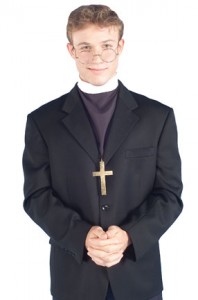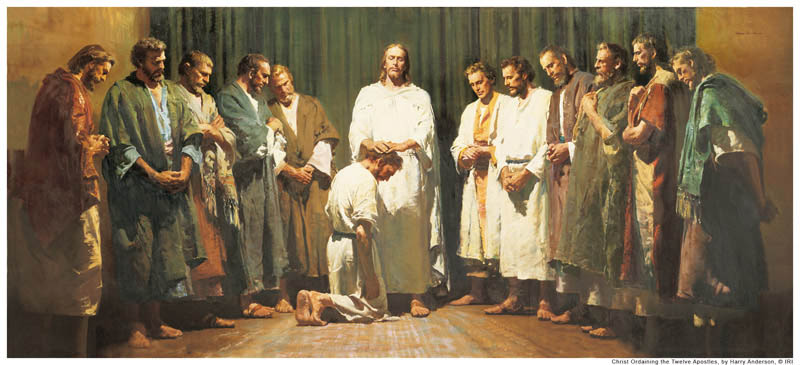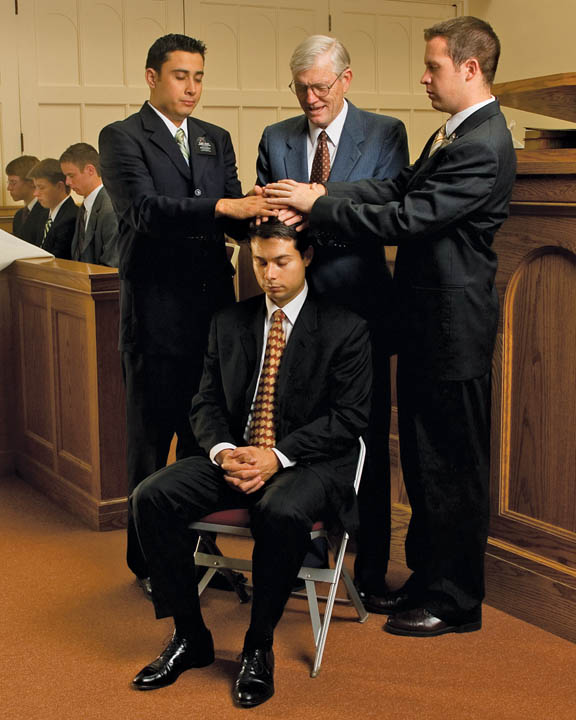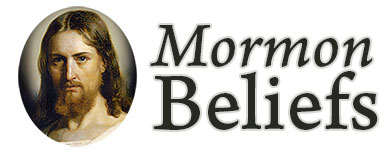Most people would define “priesthood” as professionally trained and educated clergy, ordained to positions of leadership in a church. The Church of Jesus Christ of Latter-day Saints, because of revelation through modern prophets, defines “priesthood” as the power and authority to act in God’s name. As was done in Christ’s primitive church, men are called out of their worldly vocations to minister in the gospel, and they do so through the power and authority of this priesthood.
 In most churches people who want the priesthood, make a profession or vocation out of it. They go to an accredited seminary, train for 3-8 years and when they graduate from the seminary they are given a priesthood ordination or vocation or even an assignment. Likely, they are also given an academic or ecclesiastical title, usually in a ministry based competence. If they are not given an assignment upon graduation they usually apply to various congregations for a job as an associate or assistant pastor or some other ministry based post.
In most churches people who want the priesthood, make a profession or vocation out of it. They go to an accredited seminary, train for 3-8 years and when they graduate from the seminary they are given a priesthood ordination or vocation or even an assignment. Likely, they are also given an academic or ecclesiastical title, usually in a ministry based competence. If they are not given an assignment upon graduation they usually apply to various congregations for a job as an associate or assistant pastor or some other ministry based post.
During their years in the seminary they usually received instruction on various ministry based areas of competence, counseling, psychology, perhaps business administration and church hierarchy and parliamentary or church procedure. Parishioners share in the priesthood by their pastors or leaders.
The priesthood is fundamental to all Christian churches. So what is the priesthood and why does it matter?
The question of priesthood authority colors all aspects of Christianity. It is in fact, the greatest deterrent to Christian unity in the World today. This is the primary reason Mormons and Catholics place such great emphasis on the authorized priesthood authority aspect of the gospel.
To fully understand the Mormon claim to priesthood, let’s look at other Christian priesthood claims first. (For purposes of this discussion we will only deal with Catholics and Protestants.)
The point of departure for Catholic and Protestants started with Martin Luther. Luther believed the church needed to be reformed because he felt the church had deviated from the true path. Luther’s attempt to reform the church was unsuccessful and resulted in his excommunication. After his excommunication, Luther minimized the priesthood hierarchy (i.e. the holding of specific offices and titles in a hierarchical ranking), saying he felt it was unnecessary since “baptism was itself a holy priesthood. “
One of the critical elements of the priesthood is how the term is defined. Mormons and Catholics would define the priesthood as the authorized divine authority of God to act in his name and that divine authority on earth occurs through a bestowal of priesthood authority, whose origin can be directly traced to apostolic succession.
Apostolic Succession
 Apostolic succession refers to Christ, after having organized the primitive church gave the keys to the kingdom (the priesthood to his apostles), specifically, Peter, James and John, who constituted the first presidency of the primitive church. Mormons would claim that Peter held those keys in conjunction with James and John. Together, they held the keys to the kingdom, not singularly.
Apostolic succession refers to Christ, after having organized the primitive church gave the keys to the kingdom (the priesthood to his apostles), specifically, Peter, James and John, who constituted the first presidency of the primitive church. Mormons would claim that Peter held those keys in conjunction with James and John. Together, they held the keys to the kingdom, not singularly.
However, for the Protestant, apostolic succession does not matter, because their priesthood authority is derived from the people under the principal of the “universal priesthood of believers.” This is how the New Advent Catholic Encyclopedia explains this:
“As for the “universal priesthood”, on which Protestantism relies in its denial of the divine authority of the priesthood, it may be said that Catholics also believe in a universal priesthood; this, however, by no means excludes a special priesthood but rather presupposes its existence, since the two are related as the general and the particular, the abstract and the concrete, the figurative and the real. The ordinary Christian cannot be a priest in the strict sense, for he can offer, not a real sacrifice, but only the figurative sacrifice of prayer.
The universal priesthood’s origin extends back, as it is known, to St. Peter, who declares the faithful, in their character of Christians, “a holy priesthood, to offer up spiritual sacrifices”, and “a chosen generation, a kingly priesthood” (1 Peter 2:5, 9).
Catholics trace their priesthood only as far back as St. Peter, but Mormons believe that the priesthood extends as far back as Adam and then back eternities before the earth was created, was preserved through the great flood by Noah, and afterwards was passed on to his righteous offspring.
But the very text shows that the Apostle meant only a figurative priesthood, since the “spiritual sacrifices” signify prayer and the term “royal” (regale, basileion) could have had but a metaphorical sense for the Christians.
The Gnostics, Montanists, and Catharists, who, in their attacks on the special priesthood, had misapplied the metaphor, were just as illogical as the Reformers, since the two ideas, real and figurative priesthood, are quite compatible.
Mormons claim that because of gradual apostasy, catholic apostolic succession was broken and that Peter failed to pass on the keys to the priesthood to the church hierarchy. Anglicans, according to Catholics, are inconsistent in their rejection of the Sacrifice of the Mass in particularly when they refer to their clergy as “priests.” A number of German preachers disclaim the title of priest with indignation.
The argument made by Protestants is that clergy had originally been representatives of the people and any authority is derived from the people, who need order and convenience. Understanding this concept has some merit and a historical basis, but it does not explain why Christ chose to ordain his apostles through the laying on of hands.
Protestants and Catholics would like to reconcile, particularly Anglicans and Catholics. So far this has not happened because the priesthood is an issue of such paramount important it becomes a divisive issue for both groups, particularly Protestants, many of whose churches allow female ordinations. Of course, there are also many other issues.
From the Mormon perspective, God’s response was to reestablish his church anew through the Prophet Joseph Smith. Joseph Smith received his priesthood by the laying on of hands from John the Baptist (the lesser, or Aaronic, priesthood) and Peter, James, and John. John the Baptist, Peter, and James appeared as resurrected beings to restore these priesthoods, and John appeared as a “translated” being, as he will not die, but be resurrected at the Second Coming of Christ.
Mormons do not pretend to understand why God allowed his divine authority on earth to be withdrawn or lapse, but according to the Plan of Salvation, of which Christ’s expiation was a part, all men and women throughout the ages must abide by the principles of justice and receive the proper ordinances (also known as sacraments) by those with proper divine authority.
The source of the priesthood is God, who works through the Holy Ghost and unless it is the proper divine authority to act in God’s name, the ordinances and sacraments are invalid.
From the Mormon and Catholic perspective Scripture speaks of bishops, priests, deacons as invested powers not possessed by the community at large, and that authority is transmitted through an external sign, i.e. the imposition of hands. This means that through an ordination a separate order, or hierarchy is created.
A Gradual Apostasy
 Another point of contention is what Protestants call the apostasy or a falling way from the true church. Protestants claim that over the years after the death of Christ and the apostles the church began to teach and promote false teachings and eventually this caused an apostasy. Exactly when this occurred from the Protestant perspective is unknown, but it was well in progress when Luther posted his 95 theses.
Another point of contention is what Protestants call the apostasy or a falling way from the true church. Protestants claim that over the years after the death of Christ and the apostles the church began to teach and promote false teachings and eventually this caused an apostasy. Exactly when this occurred from the Protestant perspective is unknown, but it was well in progress when Luther posted his 95 theses.
The Mormon contention is that almost immediately after Christ’s resurrection. The Apostles spent considerable time, as recorded in the New Testament, trying to prevent an apostasy, exposing false teachings and expounding about true and correct teachings. One by one, as each of the apostles died, or were martyred, they failed to appropriately pass their priesthood’s divine authority through apostolic succession. The result was a loss of the true and divine priesthood.
Just because there was an apostasy, does not mean that there were no good and honest people who tried to live the gospel as best they could, according to their personal understanding. However, many plain and precious parts of the gospel were either lost or perverted by the precepts and the teachings of men.
If there was an apostasy, or falling away, not even a reformation would have been sufficient to restore that divinely authorized priesthood. Rather a complete restoration would be necessary and Mormons contend that through the modern prophet Joseph Smith that priesthood was restored along with the previously lost and precious parts and proper church teaching and hierarchy.
One example of a lost truth was baptism for dead ancestors. The practice is mentioned in canonical scripture in 1 Corinthians 15:29. Epiphanes, a writer from the fourth century states that the practice occurred in Asia and Galatea. He claims it was a tradition that when any died without baptism, they baptized others in their name (by proxy) , lest they suffer punishment.
Apart from the passage in Corinthians, most modern Christians would probably not even be aware of the idea or think it was very novel, except that it is an odd practice done by Mormons in their temple. Baptism for the dead is one of the teachings restored to the Church by the Lord through his modern prophet Joseph Smith. Mormons believe all men are held accountable for gospel ordinances both living and dead. Spirits have a special problem. They do not have corporal bodies. Ordinances must be performed by proxy by living persons. Many people lived at a time or place when the gospel was not available to them, or the earth was in apostasy. According to the Plan of Salvation everyone must have an equal chance to either accept or reject the gospel, if not in their mortal life, then sometimes before the final judgment.
Looking back through the centuries records from the Council of Carthage held in 397 A.D. the sixth canon states that the prevailing church forbids any further administration of baptisms for the dead. Rightly we can assume that up until this time it was an original teaching in the primitive church.
The Laying on of Hands to Ordain Priests
 The act of laying on hands is an ancient practice, that has its origin in patriarchal times. Jacob (later changed his name to Israel) gave his two sons Ephraim and Manassas a blessing and inheritance through the imposition of hands (Genesis 48:14). Interestingly, when someone is ordained to the priesthood the ordinance requires the laying on of hands. This is also true when the ordained priesthood holder exercises his priesthood to impart special blessings such as Jacob gave blessings to his to his sons, various apostles preformed miracles in this fashion and Christ ordained his disciples in this manner.
The act of laying on hands is an ancient practice, that has its origin in patriarchal times. Jacob (later changed his name to Israel) gave his two sons Ephraim and Manassas a blessing and inheritance through the imposition of hands (Genesis 48:14). Interestingly, when someone is ordained to the priesthood the ordinance requires the laying on of hands. This is also true when the ordained priesthood holder exercises his priesthood to impart special blessings such as Jacob gave blessings to his to his sons, various apostles preformed miracles in this fashion and Christ ordained his disciples in this manner.
The Hebrew people also observed the same practice in the Old Testament when the Lord instructed Moses to confer the priesthood to Joshua (Numbers 27:18, 23). The religious aspect of the laying on of hands to confer priesthood authority first appeared in scripture in the consecration of Aaron and his sons to the office of priesthood. The priests, according to the Mosaic ritual, laid hands upon the heads of the animals prior to their sacrifice (Exodus 29; Leviticus 8:9) and in the expressive dismissal of the scapegoat the officiating priest laid his hands on the animal’s head and prayed that the sins of the people might descend thereon and be expiated in the wilderness (Leviticus 16:21).
The Apostles also imposed their hands on the newly baptized, to bestow the gifts of the Holy Ghost in confirmation (Acts 8:17, 19; 19:6) on those to be promoted to specific priesthood offices or callings(Acts 6:6; 1 Timothy 4:14; 2 Timothy 1:6; Matthew 13 ) and on others to bestow some supernatural gift or a physical benefit or blessing to the recipient. Because this method was so employed so often it became customary that the “imposition of hands” became synonymous with the church and designated an essential doctrine (Hebrews 6:2).
 Mel Borup Chandler is a member of The Church of Jesus Christ of Latter-day Saints (“Mormon”). He currently works in real estate investment and property management with his wife Sandra.
Mel Borup Chandler is a member of The Church of Jesus Christ of Latter-day Saints (“Mormon”). He currently works in real estate investment and property management with his wife Sandra.
